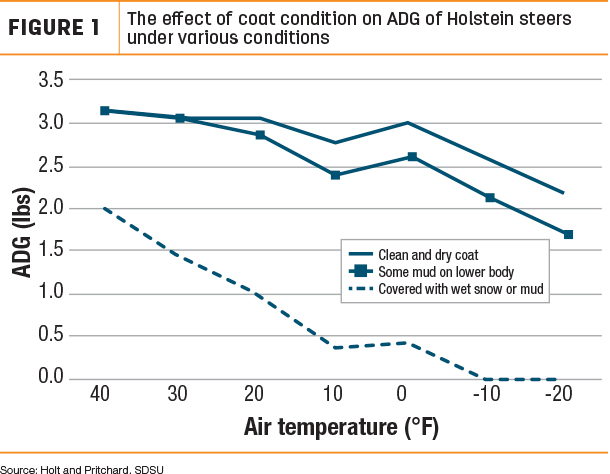We’ve all heard the snickers: “That guy finishes Holsteins.” Or, “You must really like to get to know your cattle since they’re in the yard for so long.”
Feeding Holsteins has proved to provide tremendous support for the U.S. cattle market and tends to be a bit more predictable regarding quality grade when fed correctly. The key phrase in that sentence is “when fed correctly” – without that, Holsteins can be some of the hardest animals to finish out and reach end goals that are attractive to packers.
Holsteins make up about 10% of the fed cattle market in the U.S. At one point, this value reached over 21% and continued to climb as drought and traditional beef breed prices put pressure on the fed cattle market. Needing a source of quality meat to export and understanding the high level of grade that can be achieved with Holsteins makes these animals a valuable source to the fed cattle market. Knowing how to get these animals to achieve the grade and doing your homework on the background of the calves you are getting has never been more important than with today’s market challenges.
Feeding out Holsteins differs from traditional beef breeds in a few ways, and it all has to do with how the animals are physiologically put together as well as how their health and environment are managed to counteract these differences. Selling these animals has everything to do with how well you can get them to grade to pick up premiums while realizing you are working with an animal who will take a contracted basis reduction of -$9 to -$14 per hundredweight (cwt) in most areas. Leaving yourself open with these types of cattle hardly ever results in a positive choice, as open basis has been known to run as high as -$32 per cwt.
Holsteins are different than traditional beef breeds. They are made to be milk producers and with that comes a feminine physique, which means muscle scores (MS) will not typically rival that of a traditional beef breed animal. Do not get me wrong, there are always anomalies that hit the chain, but for the most part muscle scores in Holsteins will be 2, 3 and 4’s. Traditional beef breeds will typically score 1 to 3. This MS is closely related to Yield Grade; the better the MS, the greater the chance that animal has of meeting a higher Yield Grade (as in Yield Grade 3 or 4). Cattle that hit a higher Yield Grade will have more salable meat, resulting in more pounds sold.
Another notable difference when selling Holsteins is: Most contracts require you to meet a 70% Choice/Prime level when selling and a 61% dressing percentage. Both of these requirements support feeding Holsteins higher-energy rations at a younger age, a skill set that is not easily mastered for some, as you put yourself at risk for greater instances of metabolic issues such as bloat, liver abscesses or clostridial infections.
So what are the items that need to be addressed when feeding Holsteins and why?
-
Environment. Raising Holsteins in the Midwest is a challenge due to weather conditions. Holsteins are naturally thinner hided, lay in less subcutaneous fat and don’t produce as thick of a hair coat than traditional beef breeds and because of this are more sensitive to cold stress. Cold, wet, snowy winters will increase maintenance demands high enough that the animal will actually lose weight when subjected to these conditions where traditional beef breeds may just reduce their average daily gain (ADG) for a short period of time (Figure 1).

Because of this, it is important for maximizing gain, fat deposition and carcass quality that one think about the benefits of raising Holsteins in a bedded or slat barn type of facility. Without it, you are less likely to reach the desired contracted dressing percentage, Yield Grade and end weight in an economical time frame.
- Health: Another factor that needs consideration is the health of the cattle you are feeding. Holsteins, which are removed from their dams for obvious reasons, sometimes do not get an ample amount of colostrum, which can greatly impact their health. Purchasing groups of calves from the same source will help reduce the instances of spreading disease and reduce the risk of higher death loss.
It is important to look at what kind of facility that animal was raised in as a wet calf (huts, barns or outside) and what type of climate it was subjected to (drier air or humid areas). All these factors can impact what kind of struggles you may be up against when purchasing these animals.
Also, acknowledging that they spend numerous days on high-energy rations, one should look at updating clostridial vaccinations and supporting both the rumen and liver during the finishing phase. Working with your veterinarian on a sound health and vaccination protocols is key. Ultimately, healthier cattle will both be cheaper to finish and grade better.
- Diet: Feeding Holsteins to reach a certain grade and yield requires pushing that animal or feeding them a high-energy ration for a larger duration of their life in relation to traditional beef breeds. This is different due to the fact that Holsteins are already genetically predisposed to a higher frame score, and thus there isn’t a need to allow that animal to grow on lower-energy rations and produce more frame.
Packers purchasing Holsteins would much rather have an animal that can pass through its facility without dragging its nose on the ground, which results in condemnation of parts of that animal. It’s also important in supporting that animal for more muscle growth and fat deposition, which leads to better grade and yield. The larger you let a Holstein get, the more bone and frame, internal organs and bigger head it gets, the less your dressing percentage will be, again resulting in discounts from your paycheck.
Correctly addressing the Holstein’s implant needs is also a careful consideration to have with your nutritionist. Working backward from your end date will help you choose which implants are most appropriate for your marketing window. Remember, no implant will work correctly when the proper amount of calories are not fed. In my opinion, implants are a significant tool when feeding Holsteins for grade and yield in addition to helping reduce cost of gain (COG). One can expect an 8% improvement in feed conversion, which directly impacts your bottom line. As an example, if you wish to add 1,000 pounds to a 400-pound Holstein at an 82-cent-per-pound COG, one will realize a $65 return by use of a proper implant program.
Feeding Holsteins can be a valuable part of any feedlot operation. Consideration as to marketing window, meeting expected carcass-based contracts, health protocols and high-energy ration use will help you determine if they can provide a return on investment. Producing a quality-based product with an expected end price and basis can help alleviate some of the stresses currently felt by the fed cattle industry. Understanding the value a Holstein brings to the market is understanding how to correctly manage that animal to enter the food chain.








